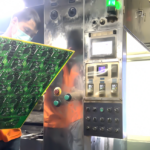4 Tech Developments Changing the Internet
Technology is given voice by the Internet. Before the web, mobile devices, ubiquitous photography and video and on-demand entertainment, new technology had a much slower road to adoption. It had to be understood, studied, experimented with and used to produce something of value before most people would pay attention and even then, fans had to seek out information in newspapers, magazines and very occasionally on television.
The Internet brought jazz to the symphony. Now, new technology likely has at least one or two offshoots before more than a scarce few discover it. If the Internet has changed technology, then it stands to reason the Internet is being changed by technology as well. Here are some notable examples.
Voice to Text
One of the first epic clashes in the personal computer era took place between Xerox, Apple and Microsoft. The shared goal of these three companies was to replace the command-line interface for personal computers with a graphical interface. This moved the PC world from text operating systems to “desktop” systems.
Now, with the advent of mobile devices and client-server voice interfaces, the computer industry is moving back in the direction of the command line. Except now, users are issuing directives by speaking instead of typing.
The possibilities for such an interface are intriguing, especially if developers can harness the expressive power of the command line and make it available to users in an intuitive fashion. It is already possible to perform basic searches and do simple ecommerce shopping with mobile device voice interfaces. The real test will be to see if it is possible to do complex multi-layered tasks using the spoken word.
Connected Machines
The hobbyist drone market has already given the technology world a preview of what things will look like when the average electronic device has a connection to the web. Beyond simple control, some of these devices will allow their users to perform tasks that would otherwise be impossible. Security is one area where there are already myriad practical applications for a “network of devices.”
For instance, if a set of surveillance cameras were able to operate in a synchronized fashion, they might be able to pick out details and obtain much better imagery than if they simply followed a set of pre-programmed instructions. This kind of harmonious operation is only possible if the firmware and software controlling the system is able to communicate in a decentralized fashion.
Scientific Study
Not long ago, a group of developers created a “view the night sky” application for the Linux operating system which allowed computer users to catalog and study constellations, planetary movement and cosmic phenomena. Using this kind of application as a foundation, it wasn’t long before a network-operated series of cameras, observatories, VSAT facilities, weather reporting stations and astronomy clubs linked up across the Internet and began to compile a continuous stream of measurements and data.
Because the Internet allows signals to reach from one side of the planet to the other in near real-time, it is possible for a properly arranged series of observation stations to build hyper-accurate maps of both the solar system and distant stars. This kind of information is crucial to the fields of astronomy, physics and aerospace and has influenced the electronics used to communicate online.
On-Demand Video
The ability to tap or click an icon and start watching nearly any movie or television show ever made is forcing Internet service providers to find ways to reduce the load on network infrastructure. This is taking place rapidly on many content management platforms with advanced caching and plugins, and on mobile devices with responsive site architectures.
Faster networks are always more valuable in the long run. The good news is this technology is often exponential in effect, which will create positive feedback cycles.
Technology and the Internet reinforce each other. In fact, one is a natural result of the other. It stands to reason both will continue to advance.
















